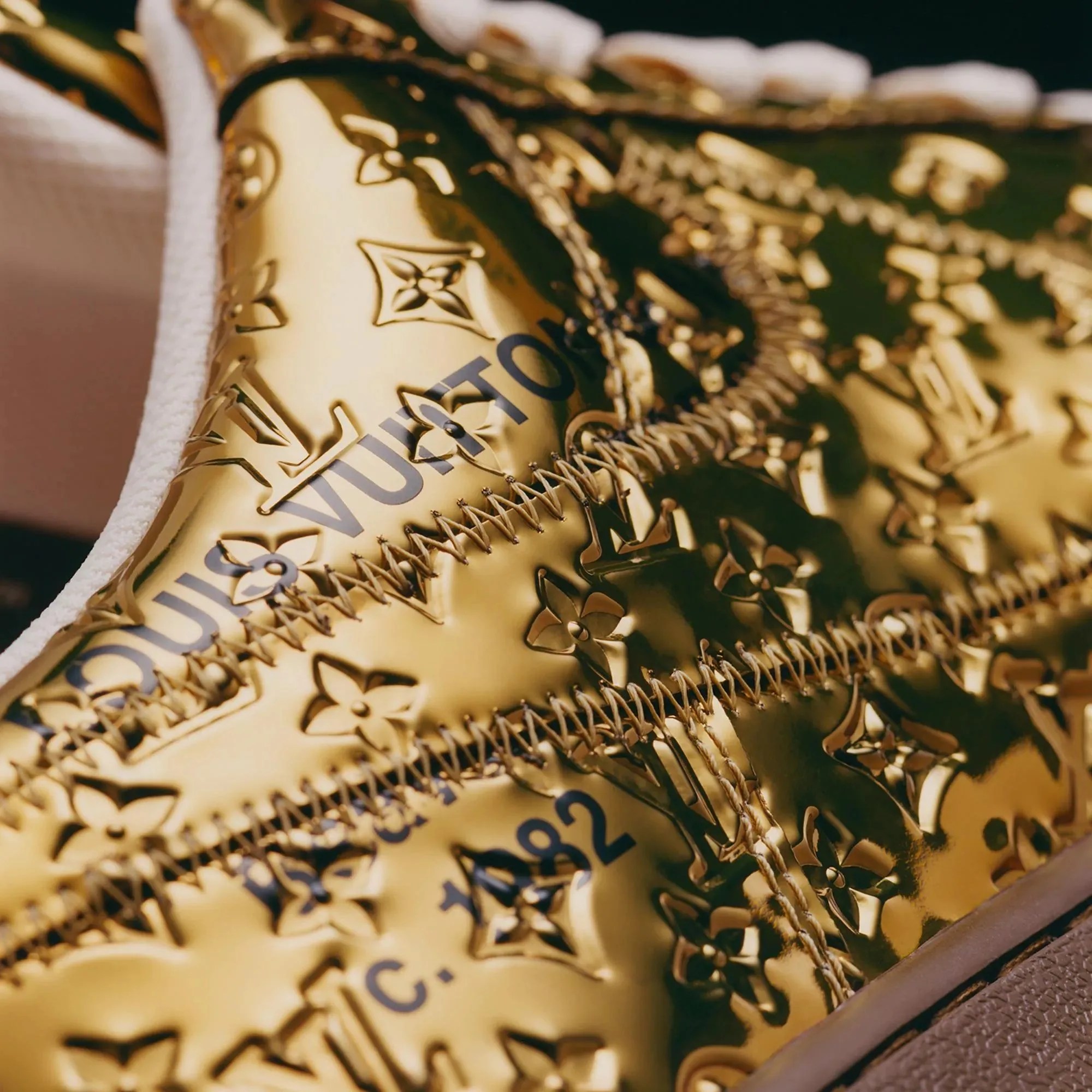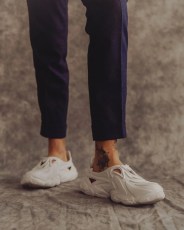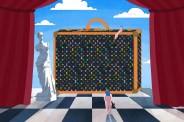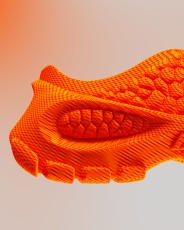There have always been sneakers that sell for astronomical amounts. On StockX, someone is asking for $257,000 in exchange for a size 9 Nike MAG Back to the Future. A size 11 Nike Dunk SB Low Paris could fetch even more: $356,000, if the seller gets its ask.
Pairs like these — drops exclusive to certain countries, rare vintage styles or limited-edition collaborations — fetch high prices due to their rarity, and are rare occurances in themselves; they aren’t all that popular outside sneaker circles. Folks aren’t wearing these sneakers. They’re hardly even showing them off.
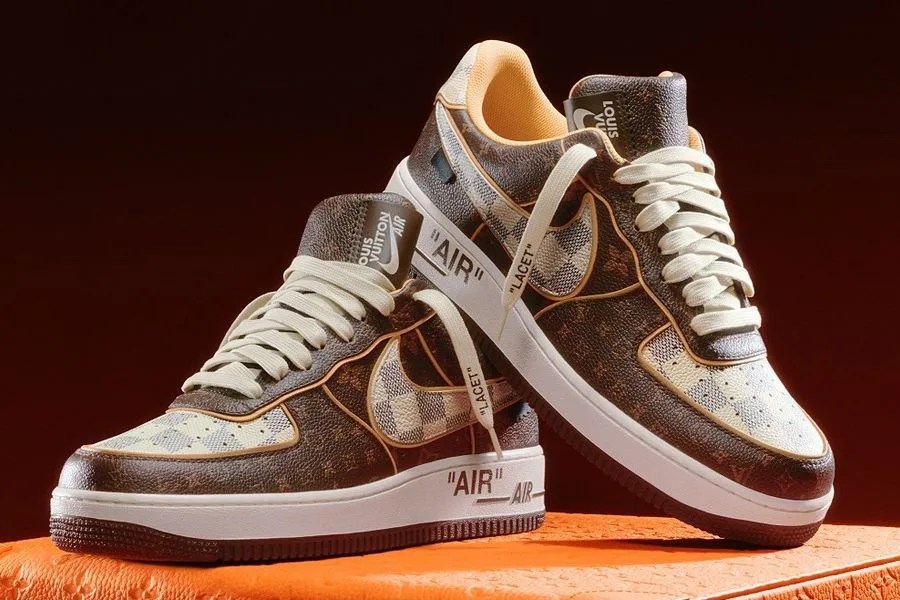 Louis Vuitton
Louis VuittonBut there’s a new sneaker — well, sneaker series — that folks are eager to collect and flaunt. It’s arguably the sneaker industry’s first art world smash: the Louis Vuitton Nike Air Force 1. The first edition featured Louis Vuitton’s all-over monogram, accented by brown damier. Limited to just 200 pairs, these sneakers sold through Sotheby’s, in an auction that benefitted The Virgil Abloh “Post-Modern” Scholarship Fund, an organization that provides fashion scholarships to students of Black, African American or African descent. At the auction’s end, Sotheby’s was pleased to pass along a check worth $23.5 million — equal to $118,000 a pair.
But the late designer didn’t just make one. In total, he designed 47 different iterations of the Nike Air Force 1 using materials from Louis Vuitton’s last runway show under his direction. Needless to say, these are not standard Air Force 1s (even though Nike is working to improve the baseline AF1). Only 21 will reach the general public, and their retail price proves much higher: $2,750.
If you flip through the first lot, which featured nine of Abloh’s designs, you’ll find they’re not that different from pair to pair. They’re different flavors of the same sweet treat — the colors change, but the base remains. There are some exceptions, like the shiny Metallic Gold pair (seen above) or the material-mixing Black Metallic Silver pair, but it’s clear they’re from the same collection.
In a way, the experiment was Warholian — and Abloh drew comparisons to the pop artist often. For this collection, Abloh, just as Warhol did with his portraits, started with a blank but adaptive canvas. This allowed him to make multiples of the same piece using different colors and patterns — and fast. There’s power in numbers and artists with a high quantity of work can fill museums.
